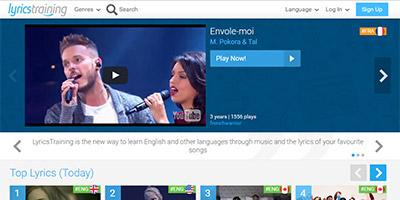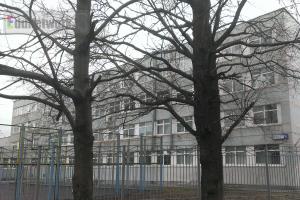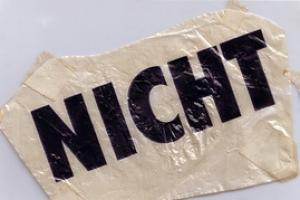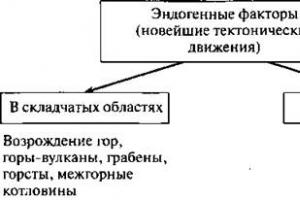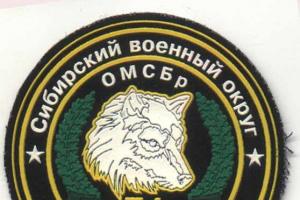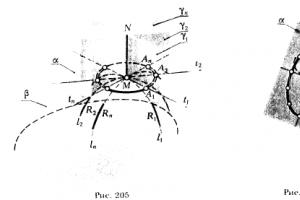Biology is one of the most interesting school disciplines, the science of nature, plants and animals, and humans. For all its fascination, biology cannot be called an easy subject - you need to understand complex mechanisms, remember a large number of terms, learn to solve problems...
The student must demonstrate knowledge of biology at the Unified State Exam in 9th grade, at the Unified State Exam in 11th grade, and in order to enter some prestigious Russian universities, it is necessary to additionally pass an exam in biology.
The Egevideo training center conducts optional lessons for students and schoolchildren in Moscow throughout the calendar year. What do these extra classes provide? Increasing the volume of biological knowledge, structuring previously studied material, the opportunity to fill in gaps, and qualitatively prepare for the Unified State Exam in biology and the university entrance exam.
The benefits of optional training with Egevideo and tutor V.Yu. Yaroslavtsev
- Biology seminars are conducted by a highly qualified specialist.
- The head of the center, Vadim Yuryevich Yaroslavtsev, is an experienced tutor, winner of the title “Vice Tutor of the Year - 2013” in
Absolute winner of the “Tutor of the Year - 2015” award.
- Teaching is conducted according to the author's methodological developments.
- Compact groups of 4–6 people.
- The training center is located in the very center of Moscow, close to the metro.
- Comfortable classroom equipped with everything necessary.
- Comfortable working atmosphere, individual approach to each student.
- Distribution of additional materials in electronic form.
Biology at the center of Egevideo is:
- Correction of educational information to suit the tasks of a specific student.
- An in-depth analysis of Unified State Exam materials from past years.
- Real practical tasks.
- Focus on understanding biological mechanisms, interesting, creative presentation of material.
- Guaranteed high scores on the Unified State Exam in general biology.
Learn biology with Egevideo!
Every year, students of tutor V.Yu. Yaroslavtseva pass the OGE and the Unified State Exam in biology, as well as the internal exam of Moscow State University with excellent results. It is absolutely possible to get 90+ points on the Unified State Exam, even if the starting level of knowledge is low - it is enough to study regularly and follow the teacher’s recommendations. In addition to face-to-face seminars, Egevideo offers remote classes in webinar format and via Skype, express courses for quick preparation for the Unified State Exam, as well as unique proprietary video courses in biology. Before choosing the Egevideo center, you can see how biology seminars are conducted by tutor V.Yu. Yaroslavtseva.
Schedule and cost of classes in Moscow
- The series of seminars lasts from September to early June, but you can join the group at any time
- If necessary, the program can be adjusted to suit the student's needs.
- An express course is provided for students who need specific knowledge in certain areas of biology.
- The frequency of extracurricular activities is once a week for all groups.
- Cost 3000 rubles for 90 minutes.
Individual lessons - work in a corner of wildlife, work at a school experimental site, work in nature, extracurricular reading.
Group classes - a circle of young naturalists, the work of “assistants” of the office on its equipment.
Mass activities - lectures and film demonstrations, excursions and nature trips, scientific evenings and conferences, exhibitions of the work of Olympiad students, campaigns: Harvest Day, Garden Week, Bird Day, Biological KVN, etc.
Occasional group, circle and mass classes can be combined into a group of forms of collective extracurricular work.
An individual form of extracurricular work in biology is carried out in almost every school. Trying to satisfy the needs of individual students interested in biology, the teacher offers to make some observations in nature, read this or that popular science book, make a visual aid, select material for a stand, etc.
But in this case, it is necessary to find out the biological interests of schoolchildren, constantly keep them in sight, set a task - to develop their interests in one direction or another, select appropriate individual tasks for the implementation of this task, complicate and expand their content. Occasional group work is usually organized in connection with the preparation and holding of school public events, for example, a holiday dedicated to Bird Day, Forest Day, Garden Week, Health Week, etc.
To carry out such work, the teacher selects a group of students interested in biology, instructs them to find the necessary material, publish a wall newspaper, prepare reports, amateur artistic activities, etc.
Usually, after the completion of one or another mass event, the episodic group disintegrates, and then, after a certain period of time, in connection with the preparation and holding of another mass event, it is created again, and its composition changes significantly.
The circle of young naturalists is the main form of extracurricular activity. In contrast to episodic group work, a circle includes schoolchildren who systematically work in it for a year or a number of years. The composition of the circle is usually stable.
A large number of students are involved in mass work - several classes, the entire school. Mass extracurricular activities are characterized by a socially beneficial orientation. Typically, schools organize such types of mass work as holidays, evenings, campaigns, hours of entertaining biology, biological conferences, olympiads, etc.
Biological KVN (club of cheerful and resourceful people) includes two teams selected from several classes, each of which, 2-3 weeks before the start of the resourcefulness competition, prepares greetings for the opposing team, questions, riddles, poems and stories about living organisms. The presenter also prepares for KVN in advance.
A jury is elected to evaluate the teams' work during the competition. The biology teacher - the organizer of KVN - supervises all the work. The teacher recommends relevant literature to the team members, inquires about the progress of preparation, and advises how to implement their plans in the most interesting way possible.
Fans are invited to biological KVN - all interested students. The date of the KVN is announced in advance and an announcement is posted. Fan participation is also assessed and their scores are added to the scores received by the team they support. Hours of entertaining biology are usually organized in each class. The duration of one lesson is an academic hour.
Students prepare each hour of entertaining biology in advance. They select the necessary information from the literature recommended by the teacher, arrange it, and prepare visual aids.
When classes are given a playful form (for example, travel), facilitators are trained.
During the lesson itself, the presenter invites the schoolchildren to take a trip, names stopping points, during which pre-prepared youths report certain interesting information about plants (animals), etc.
The presenter invites participants to guess some biological riddles, solve crosswords, teawords, and answer quiz questions.
Various evenings are organized in a similar way.
Each evening is preceded by a lot of preparatory work: the program of the evening is developed, the topics of reports and messages are distributed among the organizers, the entertaining part of it is prepared (quiz questions, biological games, crosswords, chainwords, etc.), amateur performances (poems, dramatizations, songs, musical numbers , dancing), decoration of the hall, exhibitions of students' works.
All of the listed types of extracurricular work in biology are interconnected and complement each other.
In schools where extracurricular work in biology is well organized, there cannot be just one form of it. Carrying out mass events is necessarily associated with either individual or group work in their preparation, or with the work of a circle of young naturalists.
Biology is a science that studies living nature. Its modern name appeared only two centuries ago. The school curriculum is unthinkable without studying biology and its subsections - botany, anatomy, zoology. This subject is often chosen by graduates when taking the Unified State Exam and the Unified State Exam, which indicates its significance and popularity.
Many children want to learn more about this science than is expected in the curriculum. They have an excellent opportunity to get acquainted with its sections and features both in theory and in practice. In our city there are ecological and biological centers, laboratories, clubs and other institutions where young naturalists can become more deeply acquainted with the world of plants and animals and learn about environmental protection.
In addition to gaining new knowledge, children will be able to participate in scientific conferences and competitions, prepare for passing exams and entering higher education institutions. Contact with living nature instills in children kindness, sensitivity, attentiveness, and responsibility. The classes will be an excellent basis for educational and research activities, preparation of projects at various levels - from school to all-Russian.
What a young naturalist should know when conducting experiments with plants
Experiments are a great opportunity to get acquainted in practice with what the theory described. But before you start, it is important to remember that without accuracy and attentiveness it is better not to even start them. In addition, haste and the desire to speed up the process can do a disservice. Before the experiment, put on the table only what is needed for it: seeds, plants, soil, equipment, materials, etc. There should be nothing superfluous. If you are faced with the task of growing a plant, then you need to carefully care for it: loosen the soil, fertilize it and do not forget about weeding. You also need to have so-called control plants that are in the same conditions as those used in the experiment. The value of the experiment is enhanced by diary entries and drawings. After completing the experiments, be sure to write a conclusion - a report on the work done.
What are the advantages of practicing with a microscope?

Very often children ask questions that baffle their parents. For example, the seemingly simple question “Why does nettle burn the skin?” may cause difficulties. Of course, in the age of the Internet it is easy to find the answer, but take your time. Try to come to him with your child, as they say, through experience. A microscope will help you with this. After all, how interesting it will be for both you and your child to examine the structure of a nettle leaf under a microscope. Then the knowledge that you pick up on the Internet or in a book on entertaining biology will be an excellent addition to your experiments and will certainly be remembered. It is much easier to talk about the structure of a flower, about the cells, using a microscope. It will be an excellent stimulus for cognitive activity and will expand the child’s understanding of the world that surrounds us. Hence a deeper interest in the laws of biology and life on Earth in general. Having mastered the microscope, the child will try to independently find answers to the questions that arise. The most important thing is that the young biologist researcher will learn to notice the beauty of nature, and in the future, perhaps, will choose an interesting profession as a biologist.
The presentation was prepared for a biology game in grades 5-6. Any educational complex.
Target: Expanding students' horizons about early flowering plants.
Tasks: promote the development of cognitive activity of students; develop intellectual abilities and logical thinking; introduce students to primroses using riddles as an example.
The presentation contains riddles, answers to them and illustrations about early flowering plants. Changing slides and objects on them is done by clicking. First, the text of the riddle comes out, then the name of the plant and an illustration. For each correct answer - 1 point.

The extracurricular event “You'll be healthy, you'll get everything” takes place in the form of an intellectual game.
The goal of the intellectual game through game moments of the program is to set students up for a healthy lifestyle, develop healthy lifestyle habits, and introduce them to new information.
- identify how well students have information about what health and a healthy lifestyle are
- promote the formation of healthy lifestyle skills among students
Equipment: the office is decorated with posters with statements from writers, scientists, sayings about a healthy lifestyle, a multimedia projector, and a presentation.



This game is intended for children in grade 5. Suitable for biology week. The number of participating teams may vary, but not more than 5.
The game consists of two rounds. In Round I, you must select the category and cost of the issue. When you press the clock hand, the time given for discussing the issue will begin to count down. By clicking on the piece of paper in the lower right corner, you can return to the slide with a selection of questions. In Round 2, teams take turns eliminating the category whose question they do not want to answer. When there is one question left, you need to click on the piece of paper and the question will be highlighted. You can choose the time to discuss this issue yourself.


Target audience: for 5th grade
What is life? Why am I living? What is my purpose?
In a form that is unobtrusive for teenagers, the author suggests finding answers and understanding the meaning of life: family, friends, sports, learning, travel. And, most importantly, it gives confidence that the future depends on ourselves, that life is a priceless gift that should be treasured.
The presentation is set up automatically. Additionally equipped with a sound file by M. Bernes “I love you, life” (backing track), which must be listened to quietly.


Target audience: for 10th grade
Presentation virtual excursion “Records in the plant world” was created for an extracurricular activity in biology in the 6th grade.
This resource contains interesting facts about unusual plants of our planet using photo and video materials.
Also, the presentation can be used in class, in extracurricular activities, or at an extracurricular event by primary school teachers.


Target audience: for 6th grade
The resource consists of two information and game blocks:
"Riddles about mushrooms"
Interactive test “Assemble the puzzles”
This resource can be used in biology lessons in grades 5-6 when studying the kingdom of mushrooms, in extracurricular activities of the teacher, during a week of natural science disciplines.
The game can be played as a team or as an individual competition.
The presentation was created in Microsoft Office PowerPoint 2013. The main font is Calibri, 24 point.
Technological techniques were used: “apple on a plate”, “animated puzzles”. Control buttons, triggers, and hyperlinks are used.



Target audience: for 6th grade
This quiz was conducted in an after-school group on Earth Day with middle school students. This material can also be used in their work by class teachers, ecology and biology teachers for extracurricular activities. The quiz expands knowledge about birds, animals, insects, amphibians, fish and marine animals. It instills in children a humane attitude towards nature and a sense of responsibility for all life on earth.



Target audience: for 5th grade
The presentation was prepared for an extracurricular activity in biology. Can also be used in a biology lesson. This event is aimed at developing logical thinking and interest in the subject of biology. The game is accompanied by musical backgrounds. Sound accompaniment is provided automatically. During the game, questions appear sequentially on the slides, then answers. Thanks to the configured triggers for the figures, the amount that the player receives as a result of the correct answer is displayed in the right corner of the slide. At the same time, the color of the correct answer figure changes and the rectangles with incorrect answers disappear. In some slides, when you click the correct answer, the question disappears and a picture of the correct answer appears. During the game, the points are summed up and the presenter shows them on a slide. Under question on each slide there are two fields and one “Player” button. The presenter enters the points in the first field and presses the button. As a result, the earned point appears on the second field. On the next slide, the presenter enters the points from the previous game in the first field and clicks on the “Player” button. Next, the earned point is entered into the first field, and the points are automatically summed up by pressing the button. A summary of the event is attached to the presentation.


